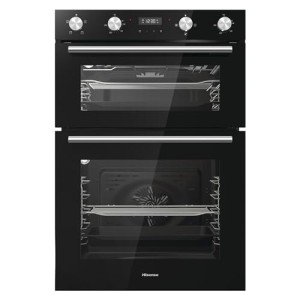The Rise of Built-In Ovens: A Seamless Approach to Modern Cooking
In modern kitchen areas, where design aesthetic appeals blend effortlessly with performance, one device sticks out as a true game changer: the built-in oven. As homeowners and chefs alike continue to seek innovative solutions that boost their cooking experience, built-in ovens have actually ended up being increasingly popular. This article explores the advantages, factors to consider, and patterns surrounding built-in ovens, highlighting why they are a necessary feature in modern cooking areas.
What is a Built-In Oven?
A built-in oven is a kitchen area home appliance designed to be integrated into the cabinets of a kitchen instead of standing alone. Unlike standard freestanding ovens, which can be moved and positioned anywhere, built-in ovens come in numerous styles and sizes to fit specifically within designated spaces. Available in single or double setups, these ovens use a structured appearance that complements contemporary cooking area designs.
Benefits of Built-In Ovens
1. Space-Saving Design
One of the most appealing advantages of built-in ovens is their space-saving design. By integrating the oven into cabinets, you can maximize important counter and floor area. This is especially advantageous in smaller sized cooking areas, where making the most of space is vital. Built-in ovens can be set up at eye level, making them more available and lowering the need to flex down.
2. Visual Appeal
Built-in ovens contribute to a streamlined and cohesive cooking area style. Offered in various surfaces-- such as stainless-steel, black, white, and custom-made kitchen cabinetry-- they can mix perfectly into the total decoration. This aesthetic appeal boosts the kitchen area's visual harmony and raises the area, developing a modern and sophisticated environment.
3. Improved build in oven built-in ovens come geared up with advanced cooking innovations, such as convection cooking, steam ovens, and wise features. These improvements enable flexible cooking alternatives, making it simpler to accomplish professional-level results in the house. Smart built-in ovens can even link to Wi-Fi, making it possible for users to control the oven remotely, get alerts, and gain access to a range of cooking programs and dishes.
4. Improved Ventilation
Since built-in ovens can be integrated with cooking area hoods and ventilation systems, they can assist preserve better air quality and lower cooking odors. This is especially significant for those who enjoy to prepare with aromatic spices and components, as an effective ventilation system can keep the kitchen area comfortable and inviting.

5. Personalization Options
Built-in ovens offer a large range of modification choices to fit individual cooking designs and needs. From professional-grade appliances with multiple cooking modes to compact designs for smaller kitchens, homeowners can select the oven that fits their specific requirements. Numerous makers likewise offer adjustable front panels, permitting you to match the oven's look to your kitchen cabinetry for a genuinely unified appearance.
Considerations When Choosing a Built-In Oven
While built-in ovens have lots of advantages, there are necessary factors to consider to bear in mind before buying:
1. Price
Built-in ovens typically include a higher price than their freestanding equivalents due to their design and setup requirements. It's important to element in both the expense of the oven and any additional expenses connected to kitchen cabinetry adjustments or installation.
2. Installation Requirements
Installing a built-in oven typically needs professional help, especially if you require to modify existing cabinets. Guarantee that you consider any expenses related to setup, including labor and prospective cabinets modifications.
3. Size and Dimensions
Before purchasing a built-in oven, determine the designated area properly to ensure an appropriate fit. Built-in ovens been available in numerous sizes and configurations, so choosing one that aligns with your requirements and kitchen area style is essential.
4. Lifestyle and Usage
Consider your cooking practices and requires when picking a built-in oven. If you often host big events, a double oven may be more helpful. On build in oven , if you have a compact cooking area, a single-wall oven might suffice.
Trends in Built-In Ovens
The cooking area appliance market is continually developing, and built-in ovens are not exempt from emerging trends. Some existing trends include:
Smart Technology Integration: With the increase of wise home technology, built-in ovens now often feature connectivity choices. This allows users to monitor cooking progress and adjust settings via mobile apps.
Energy Efficiency: As sustainability ends up being a top priority, numerous manufacturers are investing in energy-efficient built-in ovens that lower energy usage while preserving performance.
Multi-functional Designs: Built-in ovens now use features such as air frying, slow cooking, and steaming, providing versatility that fulfills a wide variety of cooking methods.
Conclusion
Built-in ovens unquestionably represent a perfect blend of style, function, and convenience in today's kitchen areas. As more homeowners select this modern service, the focus shifts to creating a cooking space that is as visually pleasing as it is useful. Whether you are constructing a brand-new home or remodeling your cooking area, considering a built-in oven might elevate your cooking experience and change your kitchen into an elegant and functional sanctuary. With a selection of alternatives available and continuous innovations in technology, built-in ovens stay a standout choice for both amateur cooks and culinary enthusiasts alike.
